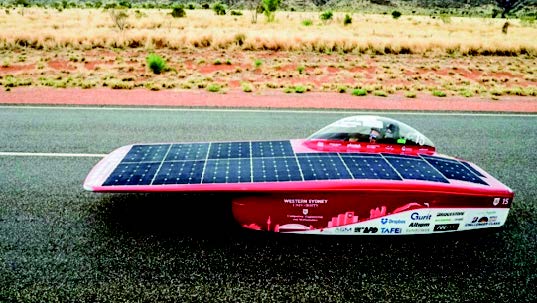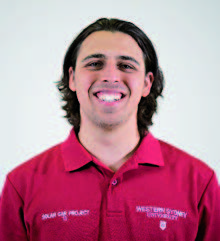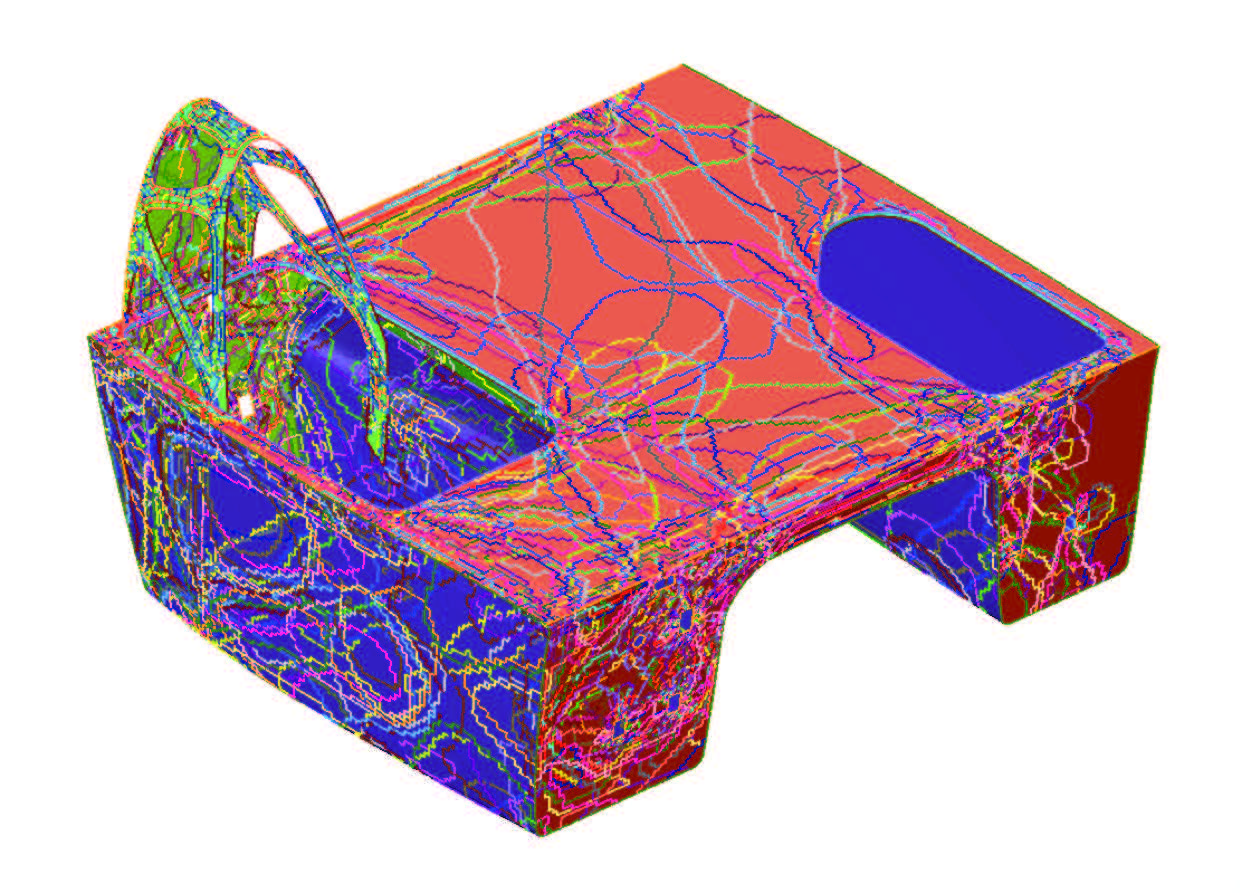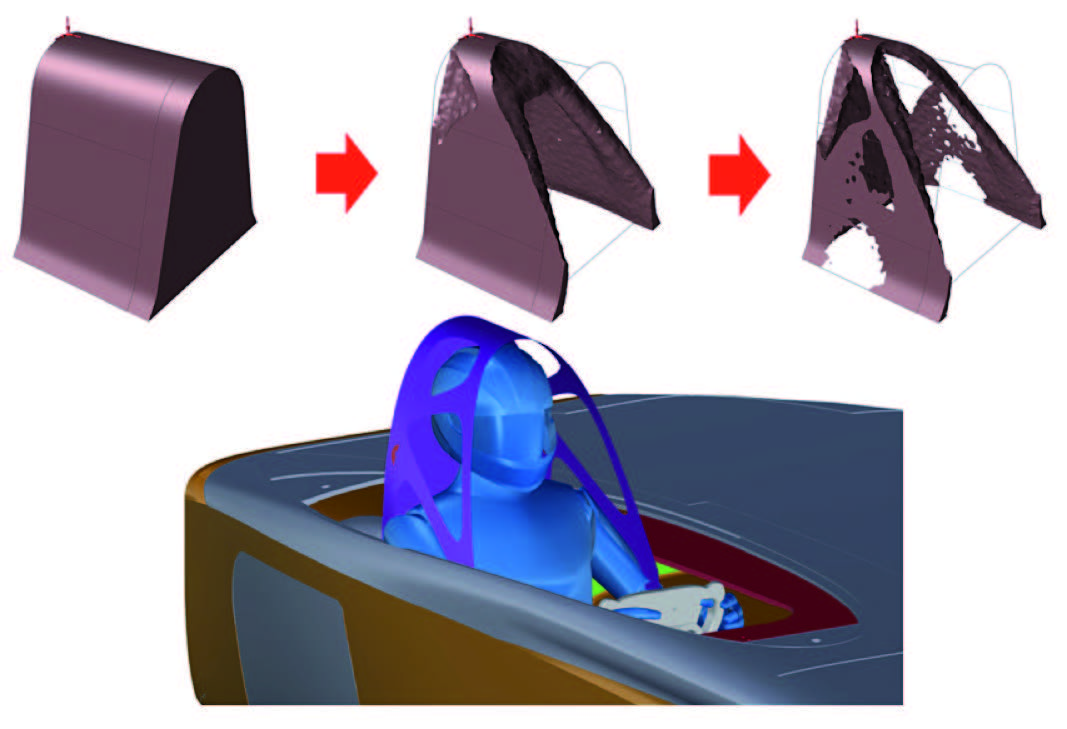Case Study
PUSHING THE BOUNDARIES
OF “UNLIMITED 2.0”
Optimizing a single-seat solar car for sustained endurance and total energy efficiency.
OVERVIEW
Industry
Automotive
Single-seat solar car
Target
Design the most efficient and aerodynamic car possible, while ensuring driver safety and adhering to class rules.
Solution
Three-phase optimisation process comprised of: shape optimization, size optimisation and finally ply optimization
Benefits
Reduction of composite weight from 80kg to only 42kg, contributing only 19% to total vehicle weight.

© Charal Sailing Team
“Dream bigger. Go farther” – This motto of the 2017 Bridgestone World Solar Challenge clearly was the ambition of the Western Sydney Solar Team when they approached Gurit for support with the design and optimization of their latest vehicle “Unlimited 2.0”.
A predetermined design of the solar car body shape that the students had optimized with the primary focus on reducing aerodynamic drag was the starting point for this collaboration. As the Western Sydney Solar Team entered the Challenger Class, where the competing single-seat solar cars are solely built for sustained endurance and total energy efficiency, strict size limits governing the maximum dimensions of the cars along with a 4m2 maximum solar array applied. Otherwise, teams were free to design the most efficient and aerodynamic car possible.
Optimising Car Components within the Existing Design
Gurit engineers were tasked with optimising the monocoque chassis, bulkhead structure and motor housing of the car within the existing design and while adhering to strict design load cases set out in the class rules as well as minimum g-force strength requirements to ensure driver safety. In addition, design and optimisation of the roll-hoop to safely accommodate the driver were part of the undertaking.

“Gurit’s expertise in composite engineering and materials was absolutely critical to our success in the World Solar Challenge and our win in the American Solar Challenge. Gurit’s optimisation process allowed us to build our lightest, fastest and safest car yet. This was a game changer as we battled through the Rocky Mountains of the American Solar Challenge, where every extra gram you have to drive up the hill is energy lost. The composite structure was bulletproof, driving over 12000km in racing conditions without a single composite failure. As a student team still learning about the engineering process, we were extremely grateful for the professionalism and patience from Gurit’s staff, allowing us an excellent learning experience.”
– Max Mammone, Team Captain
Gurit was provided with a geometric model of the car that set out the chassis and structure, however no design existed for the roll-hoop allowing Gurit engineers to design and optimise this within the Perspex window. Using a design and simulation software to undertake a topology optimisation, Gurit engineers entered loading, force and design constraints to produce the most efficient roll-hoop structure capable of withstanding the minimum g-force requirements.
With the shape of the roll-hoop finalised, the design was imported into a Finite Element Analysis (FEA) model of the chassis where both structures could be analysed as one for a more accurate representation of strength and overall stiffness.
Approaching the Ultimate Structure in Three Phases
Using a composite optimisation software tool, the chassis and roll-hoop were analysed with the primary objective of minimising the structure’s mass and the secondary objective of maximising the structure`s stiffness. The design load cases were input to identify minimum strengths along with a no failure constraint to ensure the structure met with competition safety rules.
The first phase of the composite optimisation undertaken was shape optimisation to maximise stiffness of the chassis and roll-hoop. A 10% material volume constraint was input and the software produced a model of the structure identifying the most efficient areas to place material to produce adequate structural stiffness.
Applying the generated model from the first phase, size optimisation was undertaken in the second phase in order to minimise mass with a no failure constraint. Where the first phase produced a model identifying the most efficient places to put material, the second phase identified how much material was needed to be placed in each area.



The model produced in the second optimization phase identified exactly where additional plies were required to achieve the no failure constraint. The degree to which the model was optimised, however, made it unachievable for any manufacturer to produce the exact layout of the carbon plies to avoid failure.
This issue was addressed in the third phase, ply cleaning, where virtual carbon tapes and patches compatible with the building method were created and added to the model. Once completed, the final model was subjected to testing using the design load cases and a no failure constraint to ensure structural integrity with the intended layout of the carbon plies.
With satisfactory results ply shapes were exported and included in the 3D model to ensure the most accurate patch placement during construction.
Hand-over to Construction Team
Equipped with the generated 3D model and data, the Western Sydney Solar Team was well prepared to use the technical optimizations to build an even faster aerodynamic masterpiece. Construction of the solar car was undertaken using Gurit® SC 110 high performance prepreg with RC 200 carbon fibre for the outside shell and Gurit® SE 84 prepreg for the remaining structural plies. Gurit® Corecell™ M foam was used in areas subjected to impact and honeycomb core in the remainder of the structure.
Results
The three-phase optimization process conducted by Gurit Composite Engineering reduced the composite weight from previously 80kg to only 42kg, contributing only 19% to the total vehicle weight.
The Western Sydney Solar Team performed well in “Unlimited 2.0”, placing 6th in the Bridgestone World Solar Challenge 2017 despite some challenging weather conditions, and improved upon their performance winning the 2018 American Solar Challenge.
